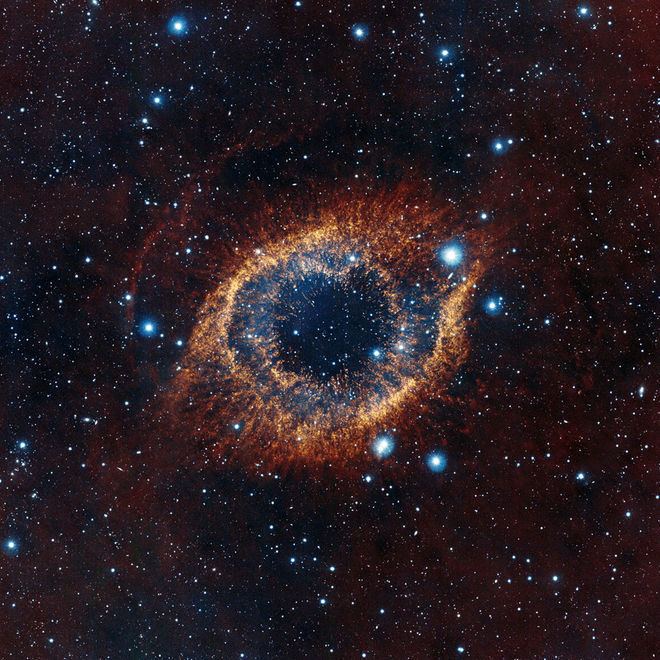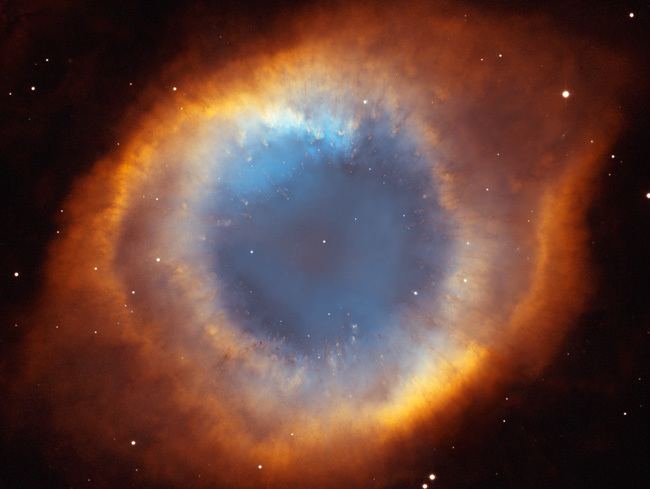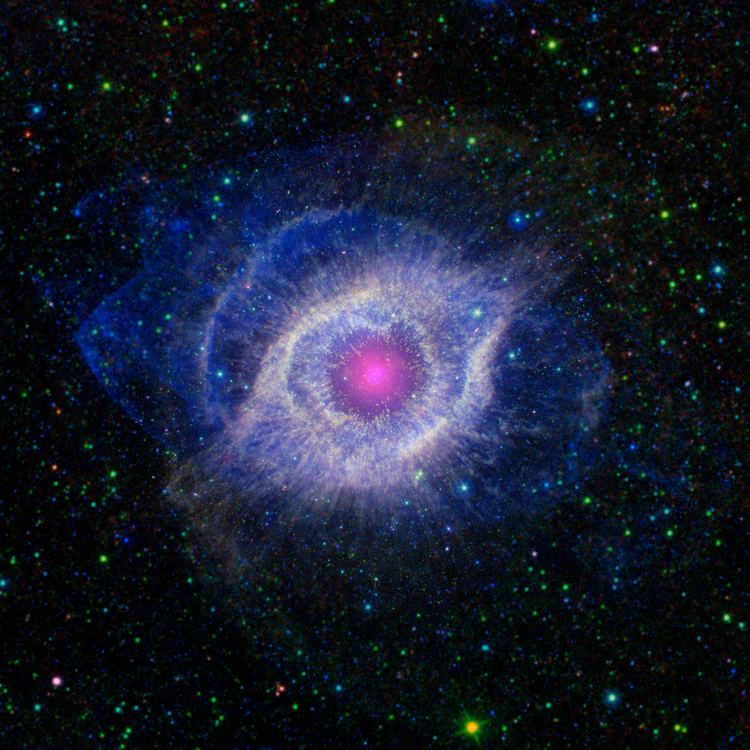Right ascension 22 29 38.55 Apparent dimensions (V) 25′ Notable features One of nearest PNs Distance to Earth 694.7 light years Absolute magnitude 6.58 Apparent magnitude (V) 7.6 | Declination −20° 50′ 13.6″ Radius 2.87 ly (0.88 pc) ly Magnitude 7.6 | |
 | ||
Coordinates RA 22h 29m 39s | Dec -20° 50′ 14″ Similar Cat's Eye Nebula, Carina Nebula, Horsehead Nebula, Orion Nebula, Eagle Nebula | ||
Meridian the helix nebula full ep
The Helix Nebula, also known as The Helix, NGC 7293, is a large planetary nebula (PN) located in the constellation Aquarius. Discovered by Karl Ludwig Harding, probably before 1824, this object is one of the closest to the Earth of all the bright planetary nebulae. The estimated distance is about 215 parsecs (700 light-years). It is similar in appearance to the Cat's Eye Nebula and the Ring Nebula, whose size, age, and physical characteristics are similar to the Dumbbell Nebula, varying only in its relative proximity and the appearance from the equatorial viewing angle. The Helix Nebula has sometimes been referred to as the "Eye of God" in pop culture, as well as the "Eye of Sauron".
Contents
- Meridian the helix nebula full ep
- Sailing stone ft plini the helix nebula play through
- General information
- Structure
- Knots
- References

Sailing stone ft plini the helix nebula play through
General information
The Helix Nebula is an example of a planetary nebula, formed by an intermediate to low-mass star, which sheds its outer layers near the end of its evolution. Gases from the star in the surrounding space appear, from our vantage point, as if we are looking down a helix structure. The remnant central stellar core, known as a planetary nebula nucleus or PNN, is destined to become a white dwarf star. The observed glow of the central star is so energetic that it causes the previously expelled gases to brightly fluoresce.

The Helix Nebula in the constellation of Aquarius lies about 700 light-years away, spanning about 0.8 parsecs (2.5 light-years). Recent images by the Hubble Space Telescope of the Helix Nebula are a composite of newly released images from the ACS instrument and the wide-angle images from the Mosaic Camera on the WIYN 0.9-metre telescope at Kitt Peak National Observatory.
Currently, the age is estimated to be 7004106000000000000♠10600+2300
−1200 years, based solely upon a measured expansion rate of 31 km·s−1.
Structure

The Helix Nebula is thought to be shaped like a prolate spheroid with strong density concentrations toward the filled disk along the equatorial plane, whose major axis is inclined about 21° to 37° from our vantage point. The size of the inner disk is 8×19 arcmin in diameter (0.52 pc); the outer torus is 12×22 arcmin in diameter (0.77 pc); and the outer-most ring is about 25 arcmin in diameter (1.76 pc). We see the outer-most ring as flattened on one side due to its colliding with the ambient interstellar medium.

Expansion of the whole planetary nebula structure is estimated to have occurred in the last 6,560 years, and 12,100 years for the inner disk. Spectroscopically, the outer ring's expansion rate is 40 km·s−1, and about 32 km·s−1 for the inner disk.
Knots
The Helix Nebula was the first planetary nebula discovered to contain cometary knots. Its main ring contains knots of nebulosity, which have now been detected in many nearby planetaries. These knots are highly radially symmetric (from the PNN) and are described as "cometary", each centered on a core of neutral molecular gas and containing bright cusps (local photoionization fronts) towards the central star and tails away from it. All tails extend away from the PNN in a radial direction. Excluding the tails, they are (very approximately) the size of the Solar system, while each of the cusp knots are optically thick due to Lyc photons from the PNN. There are more than 20,000 cometary knots estimated to be in the Helix Nebula.
The excitation temperature varies across the Helix nebula. The rotational-vibrational temperature ranges from 1800 K in a cometary knot located in the inner region of the nebula are about 2.5′ (arcmin) from the central PNN, calculated at about 900 K in the outer region at the distance of 5.6′.
